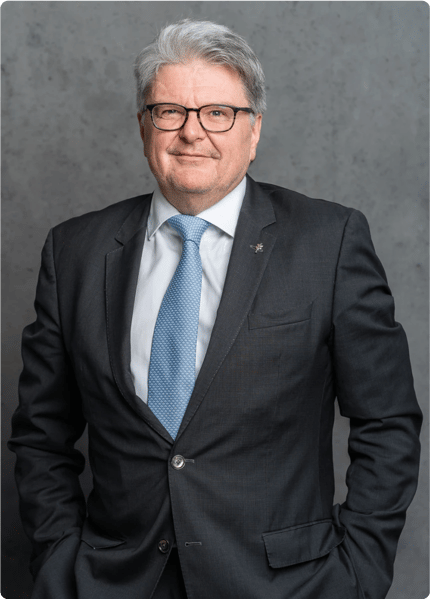Licensing, independent asset managers and FINMA – where things stand

-

Julien Froidevaux Head of Independant Asset Managers

An unprecedented level of guidance
FINMA recently released the initial figures on the status of licensing applications at 31 December 2022. It had already issued basic guidelines (late 2021), some guidance on the timetable for submitting licensing applications (early May 2022), and a reminder about the prudential measures taken if IAMs miss the licensing deadlines (August 2022).
It’s hard to understand why so many portfolio managers are still up in the air, given the amount of guidance that has come not only from FINMA, but also from self-regulatory organisations, supervisory bodies and other players in the IAM industry, such as custodian banks, lawyers and consultants
What the figures show
Let’s rewind to 18 months ago: out of the 2,327 IAMs and trustees that, in June 2020, said they would apply for a FINMA licence, only 180 had submitted their application by September 2021 and the number of licensed entities stood at 16.
In its 30 January 2023 press release, FINMA noted that it had received 1,699 applications, including 1,534 from IAMs and the remainder from trustees. The number of licensed portfolio managers had risen to 642 by the end of December 2022. That gives us a better idea of just how busy FINMA’s teams were during that period.
Around 1,000 applications are still being processed, with the related licences expected to be issued gradually in 2023. It’s important to remember that, even if final approval has not yet been granted, if the application was submitted on time – i.e. by 31 December 2022 – IAMs can go about their business unhindered while they await FINMA’s seal of approval.
IAMs that haven’t submitted a licence application, or that submitted it late, can no longer conduct portfolio management activities. In total, 1,060 entities have informed FINMA that they do not intend to submit an application.
Even more surprisingly, 685 institutions registered as a portfolio manager or trustee on the survey and application platform but have not contacted FINMA or a self-regulatory organisation since. Nearly half of those institutions did not respond even after FINMA sent reminders – those portfolio managers are really treading on thin ice if they’re still operating.
If an IAM decides to halt its business, it’s required to formally notify FINMA. If it decides to continue working and submit a late application, the IAM is required to notify FINMA and suspend its operations until its application has been processed. (And the application won’t be processed unless FINMA receives written confirmation that the IAM has indeed suspended its operations.) So latecomers do still have a last chance to register in 2023, but they may lose their clients in the process – FINMA has only granted deadline extensions on a few, rare occasions.
Portfolio managers that began operating in or after 2020 had to file their application by the end of 2021 or when they got their business up and running if after that date.
Without going into too much detail, FINMA says it has opened 300 investigations into suspected unauthorised activity since 2020, with almost 30 criminal complaints lodged. More than 150 institutions have been placed on FINMA’s warning list. This could be because of issues with where client assets are deposited or with the IAMs’ authorisation processes with custodian banks and other financial services providers. In fact, reading through the blacklist posted on FINMA’s website is like perusing a list of potential titles for a spy movie.
An intriguing number
Based on the applications already approved, the average portfolio manager has three employees and assets under management of CHF 180 million. These figures line up with those published by self-regulatory organisations in the past.
However, the total amount of assets under management already approved by FINMA amounts to CHF 121 billion, which raises some questions. It’s a long way off the estimated value of the IAM market, which is CHF 500–600 billion. The large IAMs in the Alliance of Swiss Wealth Managers (ASV-ASWM) alone claim to have over CHF 100 billion in assets. The difference between those figures shows just how many applications FINMA is having to deal with, and how complex they are – the large gap can’t be explained by the 2022 market downturn alone.
Even if you count all the pending applications, the actual size of the IAM market is still subject to interpretation. Investment and pension fund managers that are governed by the Swiss Collective Investment Schemes Act, for instance, also provide wealth management services, since they have private clients as well, and some securities firms and banks act as IAMs for leading custodian banks.
So it all depends on what you include. And things are further complicated when you factor in a business’ geographical scope and the booking centres it uses. Not to mention the double and triple counting of assets in some financial institutions’ reporting.
What it all means
IAMs gave many explanations for shuttering their business. Some cited financial reasons, saying they would remain below the threshold for professional activity; some said their business model wasn’t right, in terms of profit margins, client type, countries covered, etc.; and others said they were transitioning into retirement. The truth is that it will be hard for any IAM to keep working without a licence.
In response, some former IAMs have decided to join a competitor, perhaps as a business introducer, but there are almost no cases of IAMs returning to work for a bank. And while there have also been some high-value mergers and other consolidations, the actual number of transactions has been low (a few dozen that we know of).
Portfolio managers can decide to simply provide advisory services, in which case they must notify one of the three registries of asset management advisors. If they do that, there can no longer be a discretionary management agreement and the end client will have to place their market orders directly with the custodian bank. This might not be the best option in the long run, however, as banks are not big fans of execution only agreements.
Under an advisory arrangement, the end client has to create an investor profile with the custodian bank, which will not be familiar with the content of the discretionary management agreement the client previously had with their IAM. Will these private clients remain under the bank’s IAM department, or will they be moved to the private banking team? A shift to private banking could be an appealing option for IAMs looking to set themselves up as business introducers.
What’s next?
The ongoing applications will likely take several more months to process, and 2023 will be a year of transition in many ways.
IAMs will have to keep the business structures outlined in their applications going, get used to reporting any strategic changes, and finish updating their directives on such things as money laundering.
Prudential reviews and audits will begin already in 2023 for financial years ending before December 2022, and in 2024 for the 2022 and 2023 financial years. The pace and depth of that work will become clearer as we move forward.
IAMs may also decide to outsource tasks like compliance, IT and risk management.
It will be interesting to see to what extent the work of traditional private banks and IAMs will overlap on that front. Several areas in which this might happen spring to mind:
- compliance with cross-border requirements, which in the past were applied in very different ways by different financial players;
- CWMA-type training courses, which are basically compulsory within banks but had not been adopted by most IAMs;
- the ESG guidelines for discretionary management agreements, which SBA member banks will have to adopt by the end of this year. These guidelines could well mean that private clients will be inundated with an array of complex documentation and information going forward.
Lastly, from 2024 onwards, custodian banks’ onboarding processes will have to be adapted: the aim will be to avoid any unnecessary duplication of the work already being done by FINMA, and for custodians to focus their IAM monitoring on accounts held with them.
What does the future hold for IAMs?
The end of self-regulation for IAMs is good news. The market needs players that are subject to demanding regulations but that also offer a diverse range of business models and management styles. The extreme performances in 2022 are a reminder of the diversity required in terms of players and products in order to meet clients’ needs.
It will be important not to pit IAMs and banks against each other, as both types of financial institution have unique and complementary services to offer. The new rules place IAMs on the same footing as other FINMA-regulated financial intermediaries. In the long run, having a diverse range of high-quality players will be a boon for Switzerland’s finance industry. Let’s hope there’s a light at the end of the current tunnel of chaos.
You can find FINMA’s communication on supervision 02/2023 here.
Author
-
 With more than 30 years of banking and financial experience, more than half of which at the service of Independent Asset Managers, Julien Froidevaux is responsible for developing the Bank's commercial presence in this sector of activity. The holder of a PhD in Management from the University of Geneva, he also holds CFA and CWMA diplomas, as well as the ESG investment certificate from the CFA Institute. Julien Froidevaux is also a lecturer at HEC Lausanne for the Master in Finance.
With more than 30 years of banking and financial experience, more than half of which at the service of Independent Asset Managers, Julien Froidevaux is responsible for developing the Bank's commercial presence in this sector of activity. The holder of a PhD in Management from the University of Geneva, he also holds CFA and CWMA diplomas, as well as the ESG investment certificate from the CFA Institute. Julien Froidevaux is also a lecturer at HEC Lausanne for the Master in Finance.





